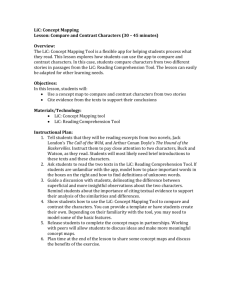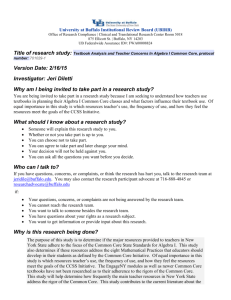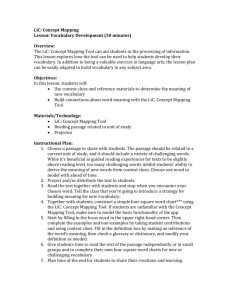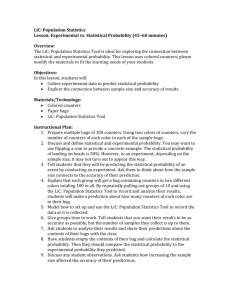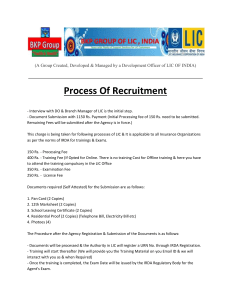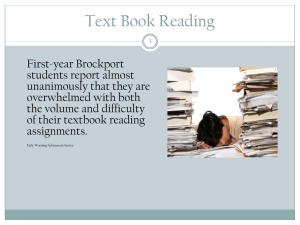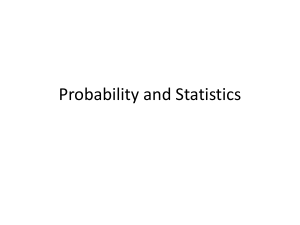lesson plan - K
advertisement
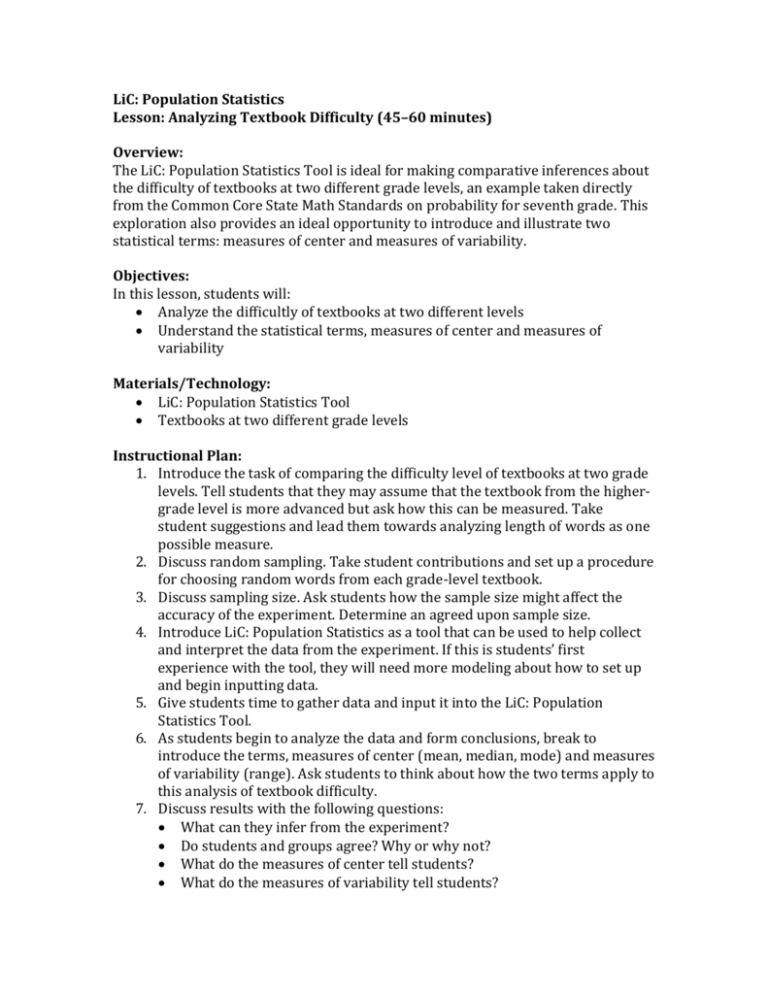
LiC: Population Statistics Lesson: Analyzing Textbook Difficulty (45–60 minutes) Overview: The LiC: Population Statistics Tool is ideal for making comparative inferences about the difficulty of textbooks at two different grade levels, an example taken directly from the Common Core State Math Standards on probability for seventh grade. This exploration also provides an ideal opportunity to introduce and illustrate two statistical terms: measures of center and measures of variability. Objectives: In this lesson, students will: Analyze the difficultly of textbooks at two different levels Understand the statistical terms, measures of center and measures of variability Materials/Technology: LiC: Population Statistics Tool Textbooks at two different grade levels Instructional Plan: 1. Introduce the task of comparing the difficulty level of textbooks at two grade levels. Tell students that they may assume that the textbook from the highergrade level is more advanced but ask how this can be measured. Take student suggestions and lead them towards analyzing length of words as one possible measure. 2. Discuss random sampling. Take student contributions and set up a procedure for choosing random words from each grade-level textbook. 3. Discuss sampling size. Ask students how the sample size might affect the accuracy of the experiment. Determine an agreed upon sample size. 4. Introduce LiC: Population Statistics as a tool that can be used to help collect and interpret the data from the experiment. If this is students’ first experience with the tool, they will need more modeling about how to set up and begin inputting data. 5. Give students time to gather data and input it into the LiC: Population Statistics Tool. 6. As students begin to analyze the data and form conclusions, break to introduce the terms, measures of center (mean, median, mode) and measures of variability (range). Ask students to think about how the two terms apply to this analysis of textbook difficulty. 7. Discuss results with the following questions: What can they infer from the experiment? Do students and groups agree? Why or why not? What do the measures of center tell students? What do the measures of variability tell students? Do they feel the results were accurate? How could the procedure be improved? Assessment Strategies Observe students conducting experiments and inputting data into LiC: Population Statistics. Create a self-assessment rubric for students to use at the conclusion of the lesson to measure their performance. Standards: This lesson is designed to address the following Common Core State Standards: CCSS.MATH.CONTENT.7.SP.A.1 CCSS.MATH.CONTENT.7.SP.A.2 CCSS.MATH.CONTENT.7.SP.B.3 CCSS.MATH.CONTENT.7.SP.B.4 Next Steps: This would be an effective lead-in to a more in-depth project focused on independent research comparing two populations of students’ choices.

